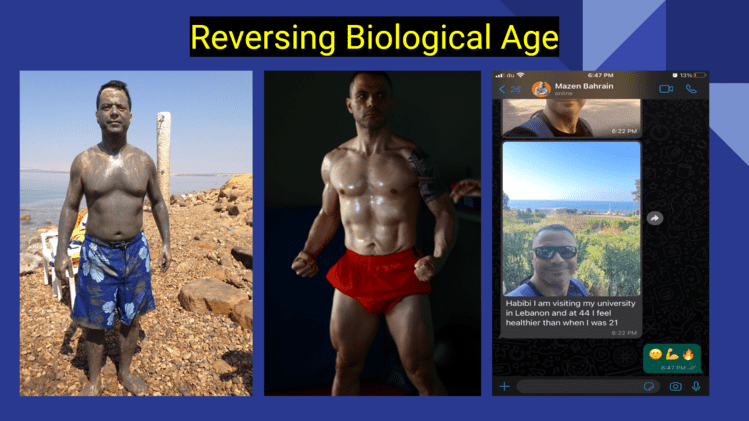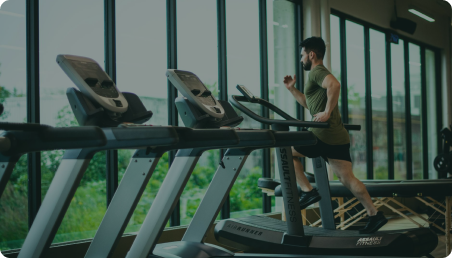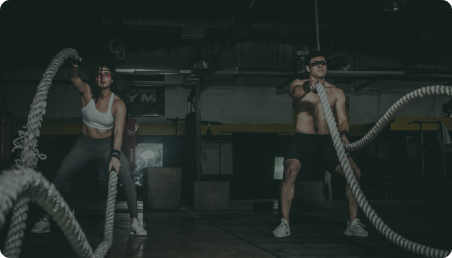Attention: UAE Entrepreneurs, CEOs, and Successful Men Weighing Over 100 kg with Medical Conditions
Watch the video to learn how our approach helps men 45+ reduce health risks and improve well-being by optimizing internal health.
WATCH THIS VIDEO
can you confirm the following First:
Yes, I watched the entire video and loved it!
I am a man over (or almost) 45, weighing over 100 kg, with a medical condition. My doctor has advised me to lose weight to prevent future health risks.
I also have a family medical history of stroke, cancer, or heart attack, and I have concerns about these risks.
I understand program is 100% Online Coaching.
My annual income is over 500k
My Journey: From My Mom's Cancer Fight to Becoming the #1 Medical Weight Loss Coach for Successful Entrepreneurs and Executives

Manish, with over 15 years in health and personal experience with family health crises, understands the true value of health. After investing over 700,000 dirhams in his mother’s cancer treatment and facing diabetes, heart disease, and obesity in his family, he became passionate about hormonal balance and nutrient deficiencies.
Now, as a leading metabolic analytics practitioner, Manish helps successful entrepreneurs and executives over 45 overcome weight loss and health challenges.
Request a call to see how we can support your health goals and improve your well-being.
Our expertise lies in assisting individuals who:
Have stubborn belly fat that just won't go away
Struggle with energy issues, affecting their daily life, such as playing with kids or compromising productivity at work
Experience low self-confidence and avoid social events because of it
Battle with bad moods, feeling angry, irritated, and anxious most of the time
Suffer from chronic gut issues
Have disturbed sleep
Experience anxiety and stress
CHECK OUT SUCCESS STORIES




"I CAN'T BELIEVE IT WAS THIS EASY TO BUILD MUSCLES!"
"MY SECRET TO LOOK YOUNGER!"
"MY DOCTOR WAS SURPRISED WHEN I Regulate MY THYROID!"
Apply Now to Secure Your Spot
Apply Now to Secure Your Chance for a Free Root Cause Screening!

Achieve sustainable weight loss!
Build a newfound confidence!
Feel energized all day long!

THE FUTURE OF HEALTH & LIFESTYLE
OUR HOLISTIC APPROACH, BACKED BY SCIENCE






HEY, QUESTION FOR YOU...
You ever struggle with
something like this:
Belly Fat: Feeling self-conscious about your appearance?
Low Confidence: Not feeling your best?
Energy Slumps: Lacking the energy to get through the day?
Poor Focus at Work: Struggling to concentrate and be productive?
Compromised Family Time: Not spending quality time with loved ones?
Low Sex Drive: Feeling less interested in intimacy?
Is This You?
If any of these resonate with you, it's time for a change. Our program is specifically designed to help men over 45 tackle these challenges and transform their lives.

Let me help you achieve lasting weight loss and transform your life!
The #1 key to permanently losing your stubborn belly fat
Stubborn belly fat often stems from hormonal imbalances, nutrient deficiencies, and toxin buildup, which disrupt your body's fat-burning processes. Poor diet and lifestyle choices can make these issues worse. Our Root Cause Screening and Metabolic Transformation Program addresses these factors, helping you achieve sustainable weight loss, increased energy, and overall well-being. This holistic approach targets the underlying causes, ensuring lasting results.
Sustainable Weight Loss
Learn Your Body Well During Journey
Feel 10 Years Younger Than Your Age

INTRODUCING
The #1 Metabolic Transformation Program
For Successful Men
Everything you need to succeed in all areas of life - in one simple program.

Chest Fat/Estrogen
Excess fat can increase aromatase activity in your body. This enzyme converts testosterone into estrogen, leading to higher levels of estrogen. This hormonal imbalance can further complicate your health and weight loss efforts
.

Insulin Resistance
As your cells become insulin-resistant, your body tends to store more fat, increasing inflammation and significantly raising your risk of developing diabetes. This also heightens the chances of encountering other serious health issues, further complicating your journey towards better health.

Toxicity
BPA, a known hormone disruptor, is linked to higher body fat and increased obesity risk in both adults and children. Reducing exposure to BPA is crucial for managing body composition and overall health.

Gut Health
Stress, poor diet, antibiotics, medications, alcohol, pollution, and caffeine can all negatively impact your gut health by damaging its lining, altering the balance of bacteria, and affecting its permeability.

Inflammations
Reducing inflammation can significantly improve your health and help you achieve a leaner body. Chronic inflammation is associated with obesity, aging, cardiovascular disease, and other serious conditions, affecting not only your longevity but also your daily comfort.

Damaged Metabolism
Rapid weight loss methods and mainstream techniques like juice fasts and low-calorie diets can be harmful to you. They often lead to muscle loss, metabolic slowdown, and nutrient deficiencies, doing more harm than good in the long run.
What's Inside When You Join
Step by step structure helping you actually get results

Pillar 1: Protocol
Our protocol combines functional medicine supplements and herbs to heal your body from the inside out, providing a comprehensive approach to your health and wellness.

Pillar 2: Nutrition
Your personalized diet plan includes ingredients specifically chosen based on your body type, ensuring that you get the most effective nutrition for your unique needs.

Pillar 3: Exercise
Your personalized exercise plan is tailored to your fitness screening results, focusing on your current fitness level, posture, and overall body conditioning to help you achieve your goals effectively and safely.

Pillar 4: Identity Shifting
Our proven system is designed to help you seamlessly adapt to our program and sustain your results for the rest of your life, ensuring lasting health and wellness.
JOIN US & CHANGE YOUR LIFE
Achieve Lasting Weight Loss with Our Program™

Our Comprehensive Approach to Your Health

Root Cause Screening: Our exclusive service to identify the underlying issues.
Program Design: Tailored to your root causes and body type for maximum effectiveness.
Coaching & Support: Ongoing customization and accountability to keep you on track.
Bonus Premium App: Makes following the program easy and convenient.
Bonus Intelligent Health Ring: Monitors your health 24/7 for real-time insights.
Water Flush: Intestine cleansing for a fresh start.
100% Money Back Guarantee
We offer a 100% money-back guarantee, no questions asked, ensuring your complete satisfaction and peace of mind.

CHECK BELOW TO SEE SOME OF OUR MOST RECENT
SUCCESS STORIES

Age 43
Lost 31 lbs in 60 Days

Lost 40 lbs in 90 Days


STILL NOT SURE?
A Personal Message...

Investing in your health can be daunting, but waiting until it’s too late can have devastating consequences. I learned this firsthand when my mother was diagnosed with stage 4 cancer. We were told there was no more time and faced with a costly, indefinite treatment. The emotional strain was overwhelming.
This experience taught me that acting on your health now, rather than delaying, is crucial. Don’t wait until it’s too late—address your health concerns before they escalate. Our metabolic program is designed to help you take proactive steps and avoid such crises.
Your health deserves immediate attention—act now for a better future.

GOT QUESTIONS? LET'S ANSWER THEM!
Frequently Asked Questions
We understand you might have some questions. We've answered some of them here, and the rest can be discussed during your Zoom consultation.
Q1: What is root cause screening?
The root cause is a comprehensive screening done in person at our location in Al Barsha. During this screening, we assess body type, food diary and habits, fitness level, gut health, emotional health, sleep, mood, lifestyle, etc. It takes approximately 2 hours and helps identify underlying health issues and gain a clear understanding of our clients' bodies.
Q2: Are results guaranteed?
Results may vary based on individual factors, but our program is designed for real, sustainable results. We don't just promise quick fixes – we aim for positive, lasting changes in your health and well-being
Q3: How does the 7-Day Risk-Free Experience work?
During the risk-free 7-day experience, you'll get a glimpse of our program. Apply now for a free strategy call to find out if you qualify. The call covers root cause screening, program selection, designing, and onboarding, taking approximately 60 minutes.

